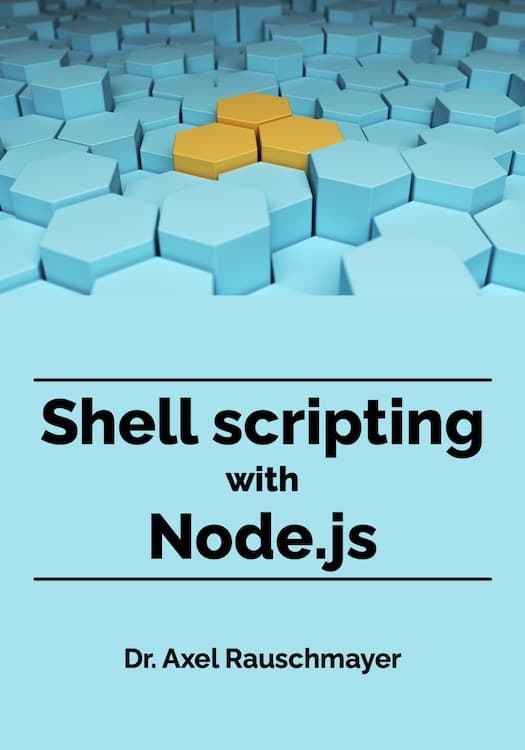2012-12
Two ways of clearing an array in JavaScript
[2012-12-25] dev, javascript, jslang
Update 2012-12-27: Better example for aliasing in Sect. 1.
In a blog post, David Walsh mentions two approaches for emptying (clearing) an array. This blog post explains the pros and cons of both approaches. In order to understand them, we first need to know about aliasing.
The future of JavaScript: a CoffeeScript-like workflow
[2012-12-18] esnext, dev, javascript
ECMAScript 6 [1] will bring many new features to the language. However, it will be years before we can rely on it being supported in most browsers that are in use. This post examines tools that will allow us to program with ECMAScript 6 much sooner.
JavaScript puzzle: equal, but not the same
[2012-12-13] dev, javascript, puzzle, jslang
The following puzzle has been posted on Reddit by davvblack: What are the values of x and y, given the following interaction?
> x === y
true
> 1/x > 1/y
true
Using ES6 template strings for regular expressions
[2012-12-11] esnext, dev, template literals, javascript
ECMAScript 6 template strings [1] give us multi-line raw (backslash has no special meaning) string literals and interpolation. But they can also be tagged, in which case a library can determine the meaning of their content. Steven Levithan has recently given an example of how they could be used for his regular expression library XRegExp.
A new way of delivering Retina images on the web
Recently, high-resolution screens (Apple calls them Retina displays) have become popular – first on cell phones, then on tablets and now on laptops. I have been waiting for those for literally decades: all other computer components (memory, processor speed, etc.) improved predictably, but screen resolutions did not get much better over the years.
The problem for web developers is that things look nicely on these displays if resolution-independent mechanism are used: fonts, vector graphics, CSS effects, etc. However, with bitmap graphics, you are forced to deliver images with many more pixels. That has the potential of greatly slowing things down on the web if you are using a Retina device.
Daan Jobsis has found an interesting solution: Use a high-resolution JPEG image, but but with an extreme compression rate (e.g. 75%):
Arrays in JavaScript
[2012-12-04] dev, javascript, jslang, jsarrays
Update 2012-12-17: New Sect. 3, “The Array constructor”.
This blog post goes deeply into how arrays work in JavaScript: they are much more like objects than you might think.
2012-11
Coercing objects to primitives
[2012-11-27] dev, javascript, jslang
This blog post looks at how JavaScript coerces objects to primitives. If you don’t know the difference between primitive values and objects, I suggest you consult my article “Categorizing values in JavaScript” at the Adobe Developer Connection.
This post was triggered by the following tweet by David Bruant:
!!(new Boolean(false)) #wtfjsThe result of the above expression is true. Let us first learn about coercion in JavaScript. We can then use that knowledge to understand this result.
Jed – a JavaScript internationalization toolkit
[2012-11-21] dev, javascript, clientjs
Internationalization is still a tricky problem: we are still figuring out how to encode text properly, let alone store content in a manner that lets us translate it easily. In contrast, in other areas of web development, tools and technologies are in place so that even non-technical users can be productive. One example is content authoring – you don’t have to know how to write HTML or how to set up a server in order to publish a blog.
JavaScript inheritance: beyond the basics (video)
[2012-11-19] dev, javascript, jslang
The video recording of my JSConf EU talk “JavaScript inheritance: beyond the basics” is online (you can also download the slides). Outline:
- JavaScript inheritance basics
- Object exemplars
- ECMAScript 6 classes
- Super-references
- __proto__
A proposal for using Canvas in web workers
[2012-11-18] dev, html5, javascript, clientjs
Ian Hickson, editor of the HTML spec, has proposed a way to let web workers use Canvas.





